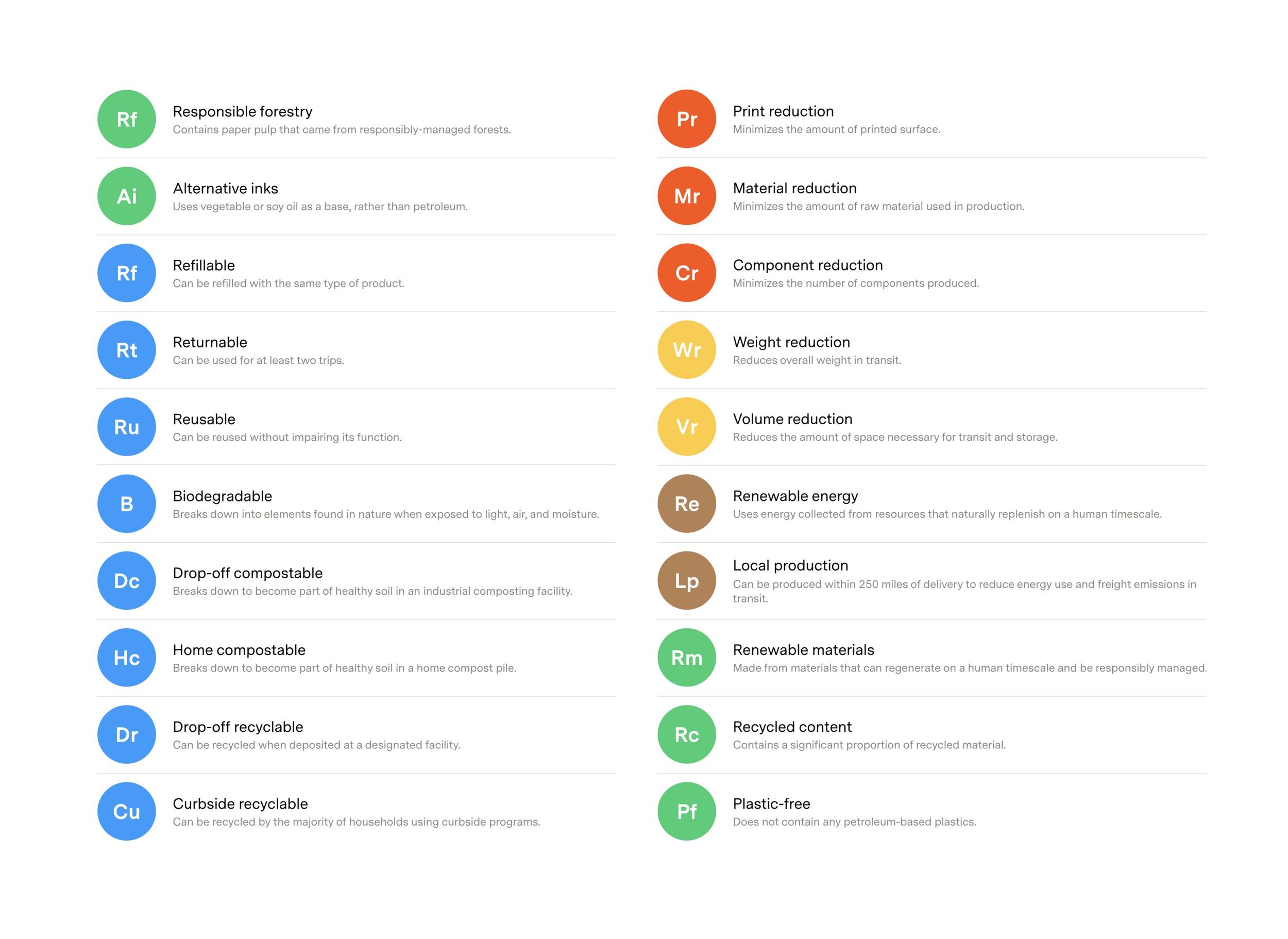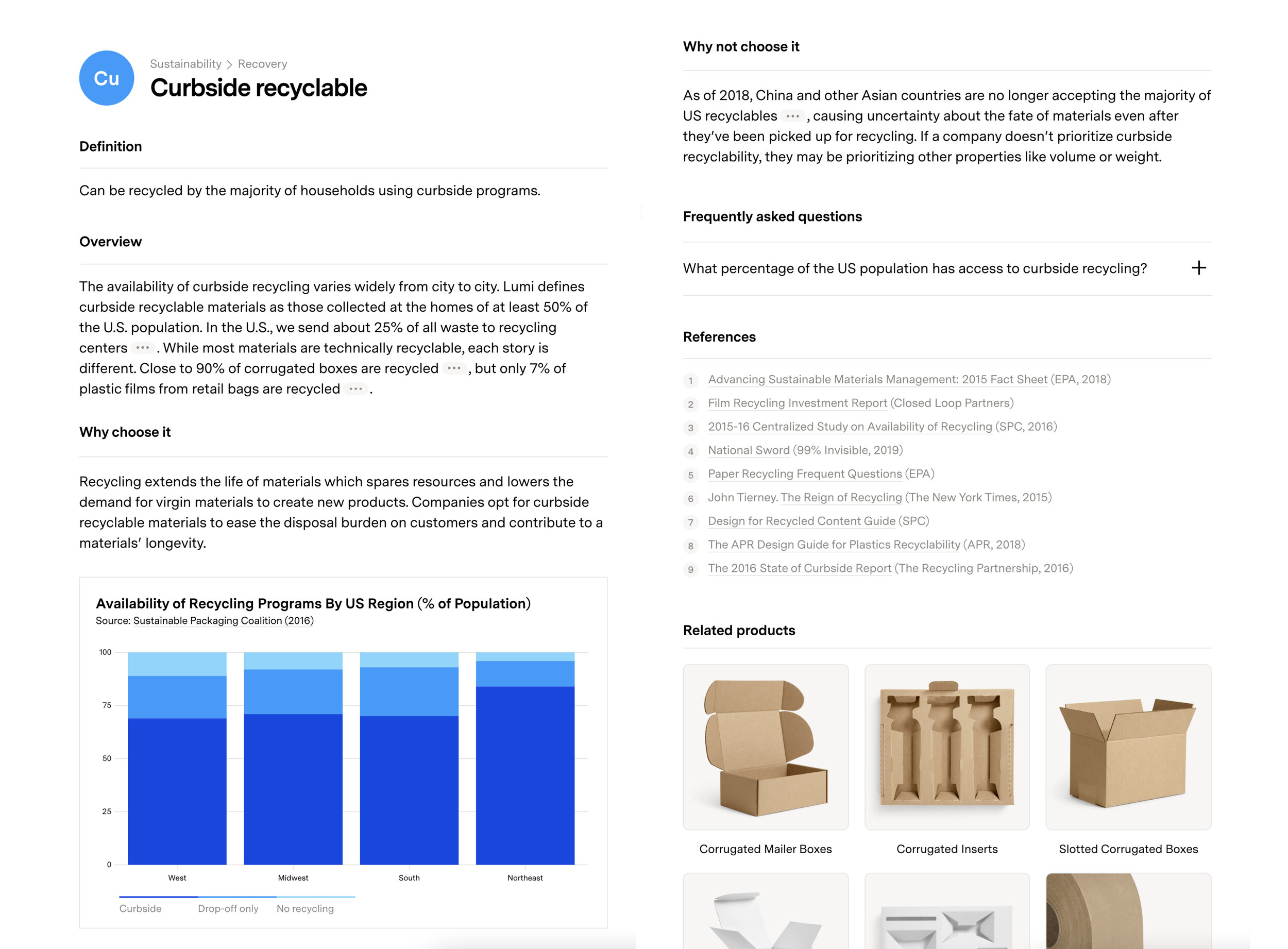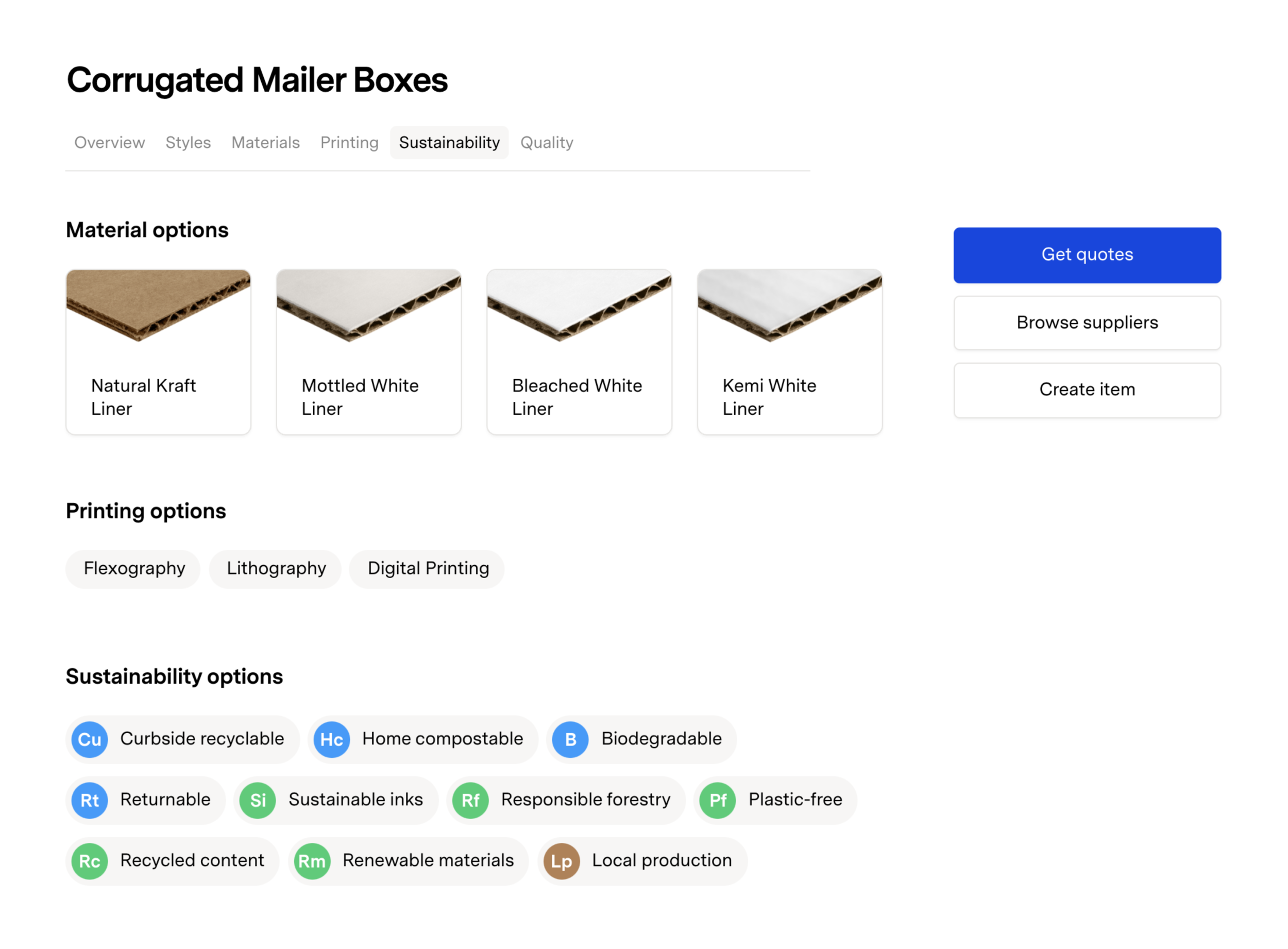Sustainability Properties
PROJECT MANAGER • WRITER • RESEARCHER
Opportunity
Within the expanding sustainability lexicon, some words have objective, technical criteria, but others leave room for much interpretation. Some words are abused for greenwashing. Others are legally binding. Even with the best of intentions, brands often find themselves navigating this gray area, unsure of how to make true sustainable changes to their packaging.
Execution
The Sustainability Properties framework defines common packaging attributes and strategies. Each definition is supported and cited with data and contextualizes tradeoffs in the form of pros and cons. Companies used properties as a resource to articulate, compare, and prioritize their sustainability goals, internally and externally.
For some properties, we were creating criteria that didn’t yet exist. For others, we were bringing clarity to existing definitions that had been diluted by years of greenwashing. Beyond the properties glossary, the terms can also be found on Lumi product pages.
Process
-
We started by prioritizing 10 properties that were more common, then expanded to less obvious (but very impactful) strategies. To organize the 20 properties, we broke them down into 5 categories, each one a phase of the packaging life cycle: materials, design, production, distribution, recovery.
-
Most of the people using Lumi were busy heads of supply chain at ecommerce companies. When writing the copy for these pages, we had to provide enough data and contextual information for them to confidently make the best decisions for their company, without presenting them with a research paper.
We brought in Ian Montgomery, founder of Guacamole Airplane, to build the properties. He started by outlining each one based on hypotheses and anecdotal information, then went deep into research, gathering reputable source papers and studies.
By kicking off the project with common properties we were more familiar with, we were able to iterate the information structure quickly, and refine the page template. Each page contained: definition, overview, pros, cons, FAQs, citations, and charts (where applicable).
-
Very early on, it became important to us that these definitions were void of opinion. It’s easy to find yourself using sweeping statements like “This material is better for the planet than that material.” But that type of phrasing exacerbates the very issues that our properties set out to solve. As Ian and I tweaked and refined the copy, we ran it against this internal gut check:
If a person was asked why they chose boxes made from recycled content instead of ones made from FSC paper, the answer shouldn’t be “because Lumi said it was better.”
While we aimed to be an authority in the packaging space, without the context of supporting information —i.e. the why — doesn’t empower the reader or scale their knowledge. All this to say, it was crucial that each property was not only defined but contextualizer with scenarios where a material may or may not be a more sustainable choice.
Every’s business’s sustainability issues can’t be addressed by the same strategies and solution. The answer to most sustainability questions will almost always start with “it depends.” Sustainability Properties exist on the other side of “it depends.” Their job is to hold someone’s hand through the context, feasibility, and impact of each of these common terms, guiding them to a place of more confidence and understanding — all in 500 words or less.
-
There are times when developing constraints early can stifle a good idea. This was not one of these times. The sustainability lexicon is polluted with fuzzy, unregulated marketing jargon.
The constraints we created with our established information structure not only made the information more comprehensive and reliable — it made each of the properties consistent. Consistency is crucial when comparing options. By refining a template up front, it was easy to scale the properties list and add new phrases.
🌎 To contextualize the content and see the properties in practice, I wrote a blog post examining several brands to see how their packaging aligned with their sustainability mission. This gave us the opportunity to show how properties were already being used by brands in their mission statements, and how those missions manifested in the form of packaging.
More projects




